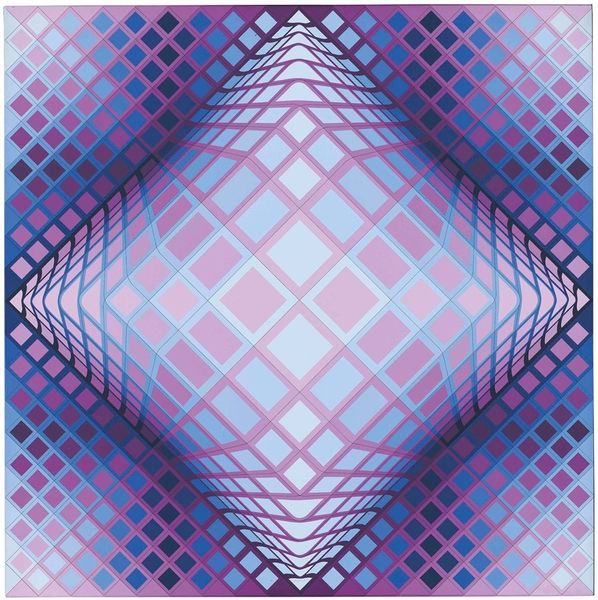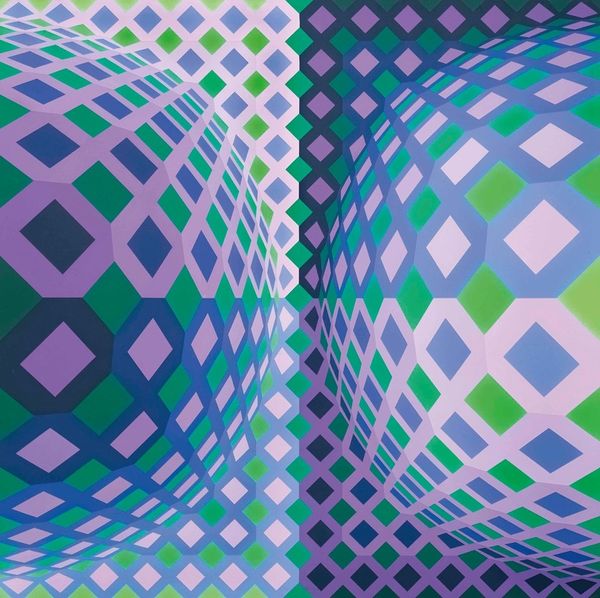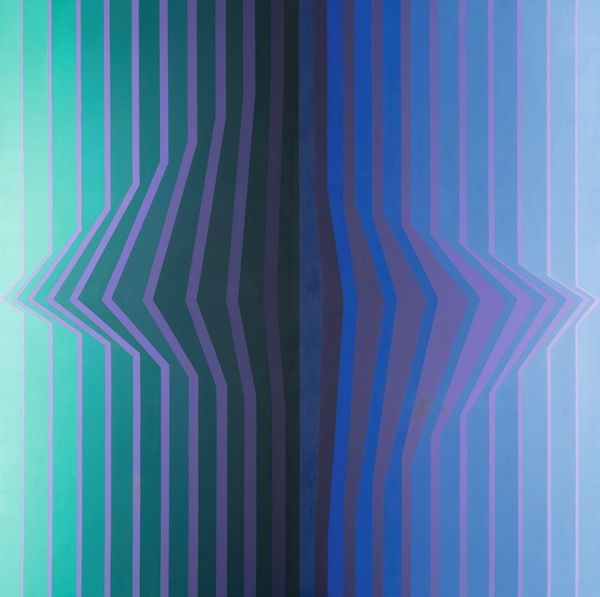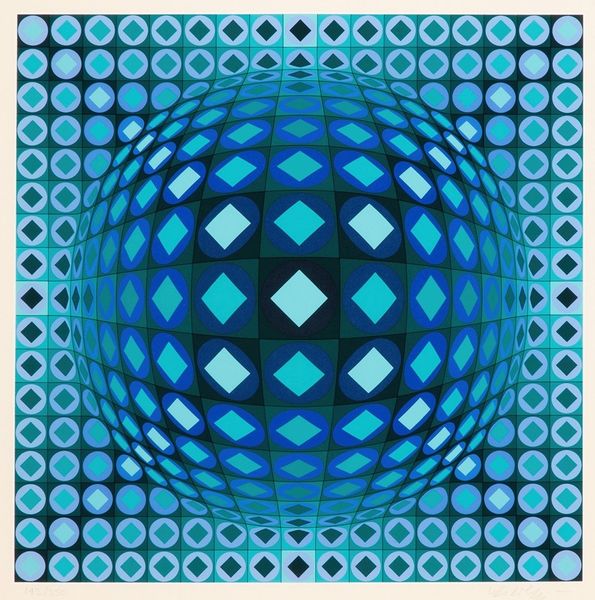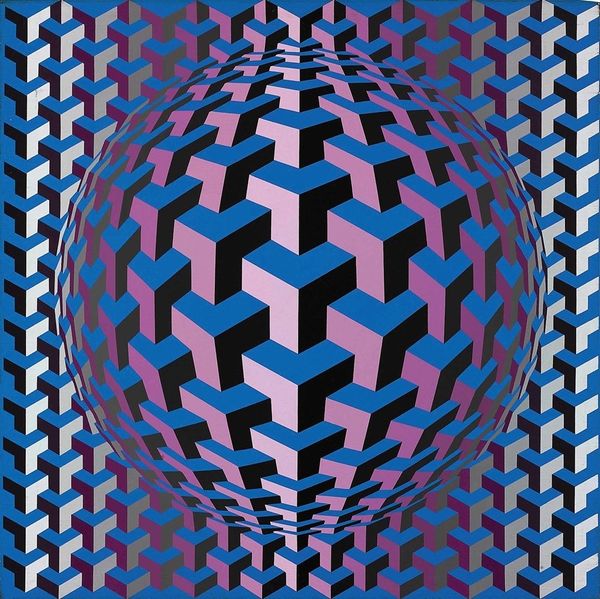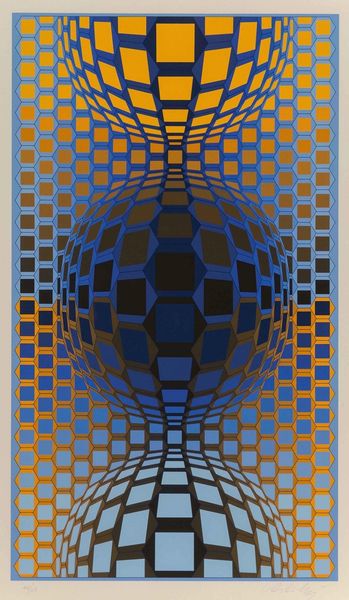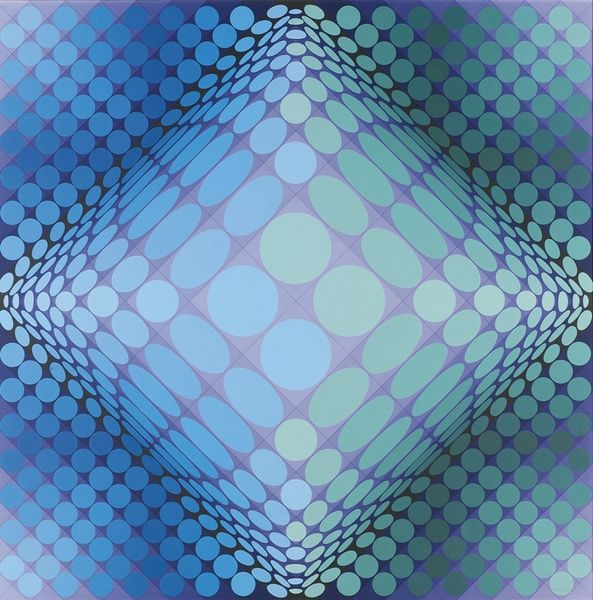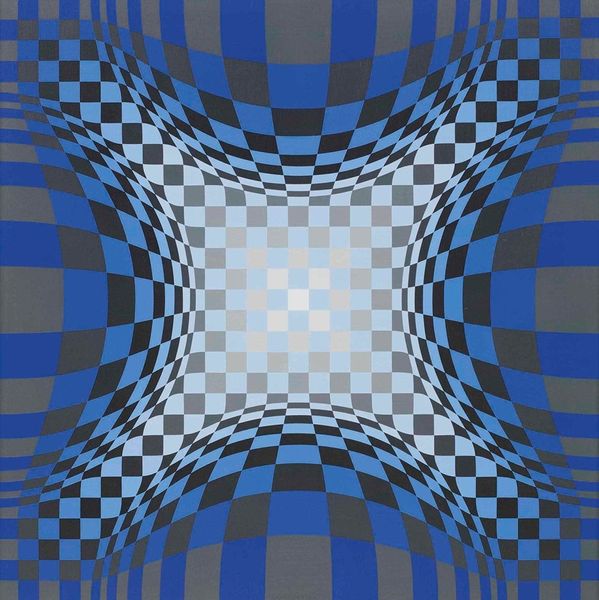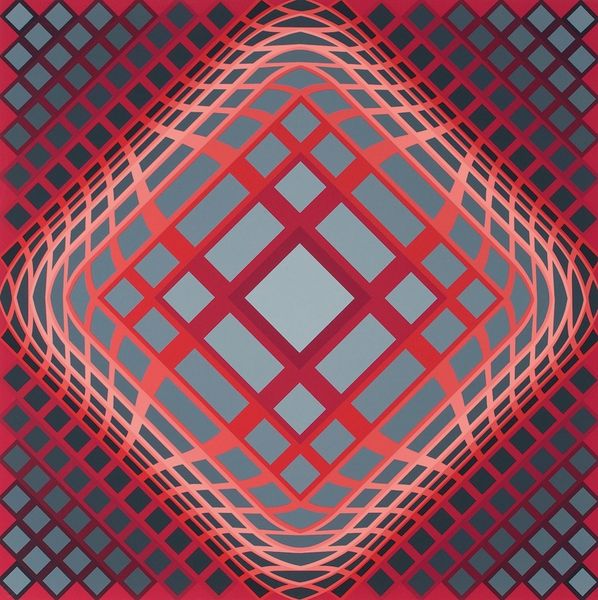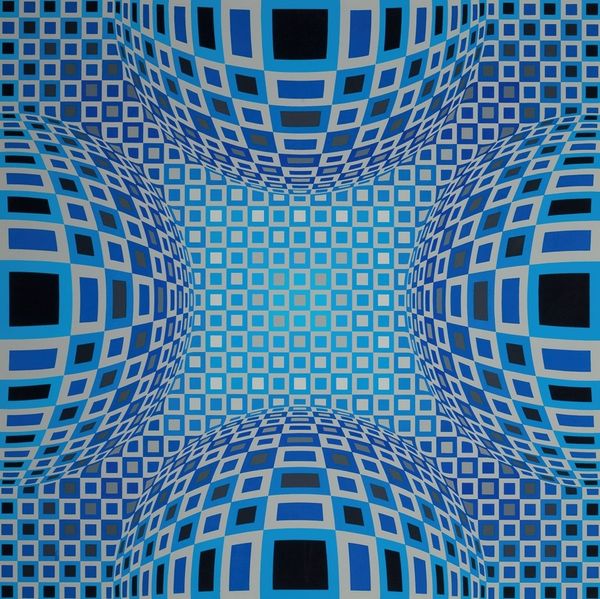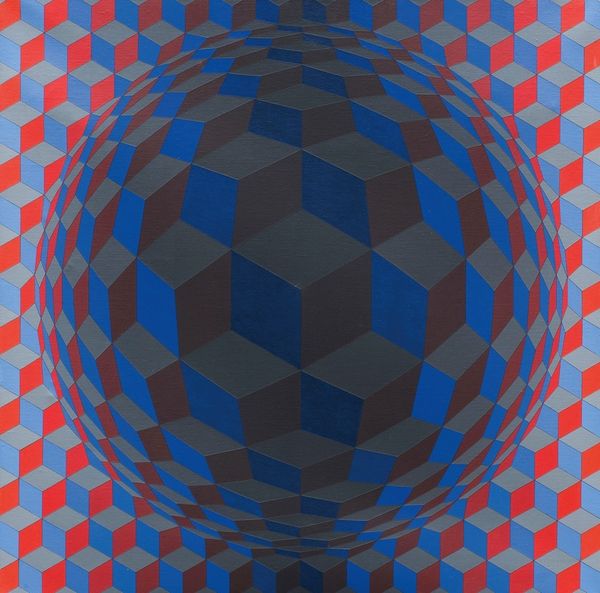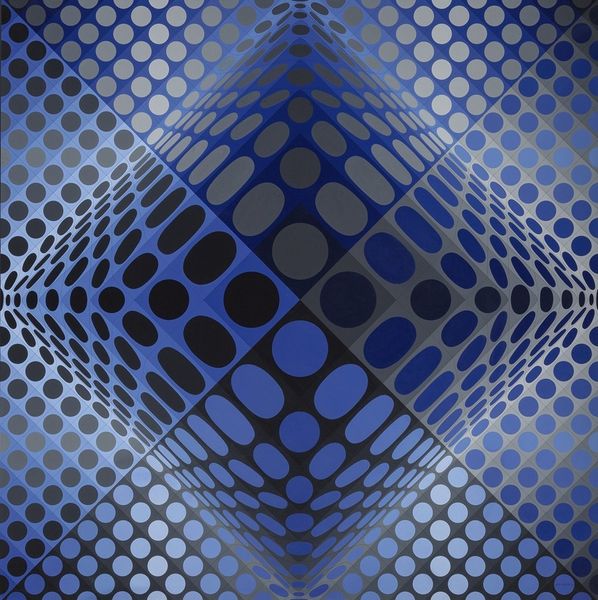
#
abstract
#
geometric pattern
#
abstract pattern
#
repetitive shape and pattern
#
repetition of pattern
#
vertical pattern
#
pattern repetition
#
layered pattern
#
funky pattern
#
combined pattern
#
repetitive pattern
Copyright: Modern Artists: Artvee
Editor: Right, so this is Victor Vasarely’s "Meta #2" from 1976. Looking at the rhythmic pattern of circles and squares in blues and purples, I find myself wondering about the labor involved in creating such a precise design. What catches your eye when you look at this piece? Curator: The systematic production. Vasarely's work exemplifies how art increasingly embraced industrial techniques in the 20th century. Consider how he utilized screen printing: repeatable, almost mechanical. It challenges our very definition of art. What about the social context of repetitive pattern, seriality, and production? How was he positioning his art in relationship to ideas about design? Editor: That’s interesting. The systematic element you mentioned is certainly present. Thinking about production, what impact did that repetitive, almost manufactured feel have on the art world at the time? Curator: Precisely! It pushed back against the traditional emphasis on the artist's unique hand and aura. Vasarely embraced the idea of reproducibility, bringing art closer to the realm of mass-produced goods. It certainly provoked debate. But, do you see any way it might critique ideas of commodity culture? Editor: Perhaps the seemingly endless repetition could be seen as commenting on mass production and consumption. It almost feels overwhelming. Curator: Exactly! And his meticulous planning raises a question. What labor went into it? He was also making paintings – often quite large- at the same time. Perhaps by drawing our attention to both design process and repetitive mark-making we can think about it within his broader body of work. Editor: That’s a great point; I’m understanding Vasarely’s context so much better. Thanks! Curator: It’s been a pleasure discussing process and cultural implications with you. I am particularly pleased to reconsider assumptions regarding design and "fine" art.
Comments
No comments
Be the first to comment and join the conversation on the ultimate creative platform.
